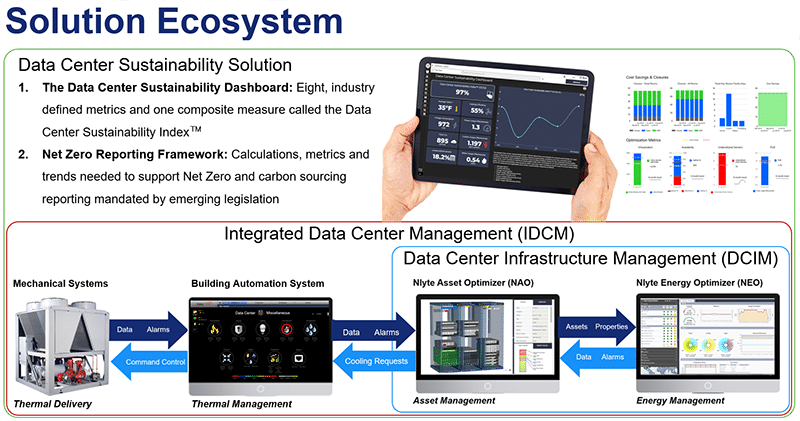Nlyte Software's Role in Helping US Federal Agencies Achieve Net Zero Targets
Published on August 29, 2023,
by
As U.S. federal agencies work toward ambitious climate goals, achieving net-zero emissions is no longer aspirational—it’s mandated. Nlyte Software plays a critical role in enabling federal net-zero compliance by delivering real-time energy insights, automating sustainability reporting, and aligning with initiatives like the Data Center Optimization Initiative (DCOI). With Nlyte, agencies gain the tools to modernize infrastructure, reduce carbon footprints, and meet evolving regulatory demands with confidence
Nlyte's Energy Optimizer is a pioneering power management system designed to oversee the data center power chain meticulously. It's hardware-agnostic nature helps ensure adaptability and vast scalability. Nlyte Energy Optimizer is not just about monitoring; it's about optimization. Real-time heat maps and capacity tools provide optimal energy consumption, empower agencies to utilize space efficiently, and facilitate risk management by simulating potential power chain failures. Moreover, by unlocking unused capacities, NEO paves the way for reduced investments in new data centers.
Shifting the lens to assets, the Nlyte Asset Optimizer offers a comprehensive solution for managing the lifecycle of assets in data centers. From the moment an asset arrives to its eventual decommissioning, Nlyte Asset Optimizer oversees the journey, ensuring space optimization, rapid asset activation, and removing underperforming assets. Moreover, its prowess lies in streamlining processes – automating workflows, promoting inter-departmental communication, and hastening response times to changes.
For a more comprehensive solution, Nlyte's Integrated Data Center Management (IDCM) acts as the bridge, connecting facilities, servers, and applications. This unification enhances efficiency and injects transparency into operations. IDCM is a vanguard in balancing infrastructure maintenance with workload availability. It stands as a sentinel, identifying anomalies, automating security responses, and ensuring that the infrastructure evolves with IT and client demands. Importantly, it holds the promise of aiding federal agencies in their journey toward decarbonization.
However, in the race towards Net Zero, monitoring and management aren't enough; reporting is crucial. This is where Nlyte's Data Center Sustainability Reporting solution shines. Simplifying the often-intricate web of compliance reporting, this tool provides a real-time sustainability dashboard, capturing the essence of a data center's ecological footprint. At its core lies the Data Center Sustainability Index™ (DCSI), a metric that encapsulates a data center's overall sustainability in a single figure. Paired with a robust Compliance Reporting Framework, it ensures that federal agencies have all the necessary metrics at their fingertips to align with Net Zero objectives.
In conclusion, as US Federal Agencies navigate the complex terrain of sustainability, Nlyte Software's suite of products, encompassing energy optimization, asset management, integrated data center management, and sustainability reporting, provides a comprehensive arsenal for agencies to tackle the challenges ahead. With Nlyte at their side, the path to Net Zero for federal data centers becomes clearer and more achievable.

Additional Resources
Understanding and Calculating Carbon Usage Effectiveness (CUE) in Data Centers
Data centers can reduce their carbon footprint by increasing energy efficiency, adopting renewable energy sources, and practicing sustainable operations. Additionally, tracking and reporting their carbon footprint can help data centers measure progress and identify opportunities for improvement.
Integrating a Building Automation System (BAS) with a Data Center Infrastructure Management System (DCIM) can provide significant benefits for data center operators, including improved energy efficiency, real-time monitoring and reporting, predictive maintenance, and improved sustainability.
Definition, Benefits, Examples, and Best Practices
